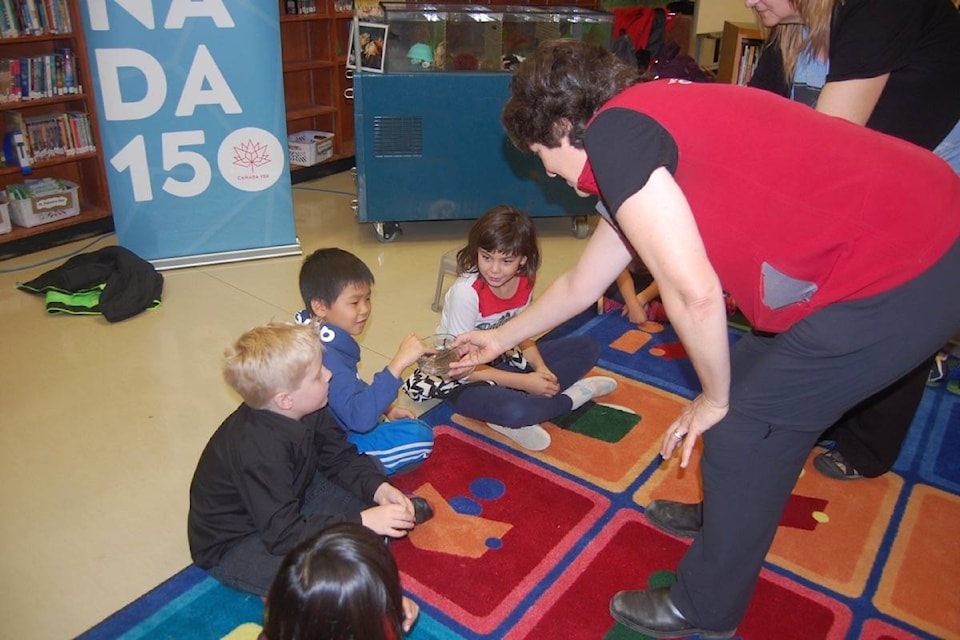Ashcroft and Cache Creek are not known for their sea life; but on October 19, students in both communities were able to get up close and personal with a variety of sea creatures—including sea stars, anemones, and sea urchins—as well as learn about the impact humans are having on our rivers, lakes, and oceans.
The schools in both communities were visited by teams from the Ocean Wise “AquaVan 150: Connecting Communities to Coastlines” program.
The AquaVan has been part of the Vancouver Aquarium’s mobile education program for 22 years, and this year it took part in a seven-month, coast-to-coast tour of the country.
When The Journal arrives at Desert Sands Community School on October 19, Mrs. Van Thienen’s Grade 3/4 class is sitting, criss-cross applesauce, on a rug in front of what is known as a touch tank. The tank is divided into compartments, each containing different live specimens of a variety of ocean inhabitants.
Catriona Wilson, manager of mobile programs for the Ocean Wise Conservation Association, brings different specimens out and talks about them: how and what they eat, how they protect themselves, and more.
Some of the more robust, and less prickly, specimens are taken around for the students to touch (delicately, with pinkie fingers only). While there is the occasional hesitation, most of the students are only too happy to go “hands on”.
When the session ends and the students need to move on to the next station, a few hang back, bursting with questions and wanting one more look.
At another station, students are shown skulls of creatures such as a porpoise and a sea otter and learn about them, while at a third they learn about the need for stewardship of our waterways, and are shown a sample from the Great Pacific Garbage Patch, so they can see the impact that our bad habits have on the world’s oceans.
It is the last day of the tour, and afterward Wilson says that it has been a very special event for those taking part in it.
“We had a soft launch in March, and left the Vancouver Aquarium in April,” she says. “As far as we know, we’re the only travelling aquarium in the country, and this is our first national tour.
“We’re very happy to have funding from Heritage Canada to do this. More than 100,000 Canadians of all ages have taken part.”
The AquaVan visits schools throughout the province during the school year, and takes part in community events during the summer.
“We try to get schools invested in the stewardship of local waterways,” says Wilson. “Shoreline clean-up can take place anywhere the water meets the land.”
She says that the touch tank provokes a range of reactions. “There’s lots of excitement, but some of the kids are afraid. They’ve never seen these creatures before. It’s a real privilege to share them.
“The kids are interested in them all for different reasons. They know about sea stars and sea anemones and sea urchins from Finding Nemo. They’re a bit anxious about the sea urchins, because they have so many spikes.”
She notes that they don’t have to go very far from the coast to meet students who have never been to the coast or the ocean. “It’s very exciting to bring these things to landlocked communities. We’re really happy to be here.”
editorial@accjournal.ca
Like us on Facebook and follow us on Twitter
